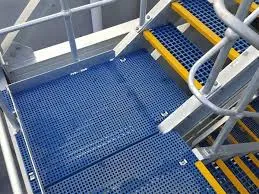
-
 Afrikaans
Afrikaans -
 Albanian
Albanian -
 Amharic
Amharic -
 Arabic
Arabic -
 Armenian
Armenian -
 Azerbaijani
Azerbaijani -
 Basque
Basque -
 Belarusian
Belarusian -
 Bengali
Bengali -
 Bosnian
Bosnian -
 Bulgarian
Bulgarian -
 Catalan
Catalan -
 Cebuano
Cebuano -
 China
China -
 China (Taiwan)
China (Taiwan) -
 Corsican
Corsican -
 Croatian
Croatian -
 Czech
Czech -
 Danish
Danish -
 Dutch
Dutch -
 English
English -
 Esperanto
Esperanto -
 Estonian
Estonian -
 Finnish
Finnish -
 French
French -
 Frisian
Frisian -
 Galician
Galician -
 Georgian
Georgian -
 German
German -
 Greek
Greek -
 Gujarati
Gujarati -
 Haitian Creole
Haitian Creole -
 hausa
hausa -
 hawaiian
hawaiian -
 Hebrew
Hebrew -
 Hindi
Hindi -
 Miao
Miao -
 Hungarian
Hungarian -
 Icelandic
Icelandic -
 igbo
igbo -
 Indonesian
Indonesian -
 irish
irish -
 Italian
Italian -
 Japanese
Japanese -
 Javanese
Javanese -
 Kannada
Kannada -
 kazakh
kazakh -
 Khmer
Khmer -
 Rwandese
Rwandese -
 Korean
Korean -
 Kurdish
Kurdish -
 Kyrgyz
Kyrgyz -
 Lao
Lao -
 Latin
Latin -
 Latvian
Latvian -
 Lithuanian
Lithuanian -
 Luxembourgish
Luxembourgish -
 Macedonian
Macedonian -
 Malgashi
Malgashi -
 Malay
Malay -
 Malayalam
Malayalam -
 Maltese
Maltese -
 Maori
Maori -
 Marathi
Marathi -
 Mongolian
Mongolian -
 Myanmar
Myanmar -
 Nepali
Nepali -
 Norwegian
Norwegian -
 Norwegian
Norwegian -
 Occitan
Occitan -
 Pashto
Pashto -
 Persian
Persian -
 Polish
Polish -
 Portuguese
Portuguese -
 Punjabi
Punjabi -
 Romanian
Romanian -
 Russian
Russian -
 Samoan
Samoan -
 Scottish Gaelic
Scottish Gaelic -
 Serbian
Serbian -
 Sesotho
Sesotho -
 Shona
Shona -
 Sindhi
Sindhi -
 Sinhala
Sinhala -
 Slovak
Slovak -
 Slovenian
Slovenian -
 Somali
Somali -
 Spanish
Spanish -
 Sundanese
Sundanese -
 Swahili
Swahili -
 Swedish
Swedish -
 Tagalog
Tagalog -
 Tajik
Tajik -
 Tamil
Tamil -
 Tatar
Tatar -
 Telugu
Telugu -
 Thai
Thai -
 Turkish
Turkish -
 Turkmen
Turkmen -
 Ukrainian
Ukrainian -
 Urdu
Urdu -
 Uighur
Uighur -
 Uzbek
Uzbek -
 Vietnamese
Vietnamese -
 Welsh
Welsh -
 Bantu
Bantu -
 Yiddish
Yiddish -
 Yoruba
Yoruba -
 Zulu
Zulu
inserting rock bits techniques and strategies for efficient ...
Inserting Rock Bits Techniques and Strategies for Efficient Drilling
In the realm of drilling operations, especially within the oil and gas industry, the efficiency of the drilling process is paramount. One critical component that significantly impacts this efficiency is the rock bit. Rock bits are used to penetrate various types of geological formations, and selecting the right bit for the job is essential for successful drilling. This article discusses various techniques and strategies for effectively inserting rock bits, emphasizing the importance of efficiency.
Understanding Rock Bits
Rock bits come in various types, including roller cone bits, fixed-cutter bits, and PDC (Polycrystalline Diamond Compact) bits. Each type serves different drilling environments and rock formations. The choice of rock bit depends on factors such as the hardness of the rock, the drilling depth, and the required rate of penetration (ROP). Understanding the specific requirements of a drilling project is the first step towards selecting the appropriate bit.
Pre-Drilling Considerations
Before inserting a rock bit, several pre-drilling considerations must be evaluated. This includes geological surveys to identify the rock formation and its properties. Data from previous drilling operations can inform the current project, helping to anticipate potential challenges. Additionally, having an accurate understanding of the wellbore design, including diameter and depth, is crucial to ensure the selected bit can be efficiently inserted and will perform optimally.
Techniques for Inserting Rock Bits
1. Proper Alignment and Setup Before inserting the rock bit into the drilling assembly, it is vital to ensure that all components are aligned correctly. Misalignment can lead to increased wear on the bit and a higher likelihood of failures during drilling. Use precise measuring tools to confirm that the bit is correctly oriented based on the well plan.
inserting rock bits techniques and strategies for efficient ...

2. Utilizing Lubrication Thoroughly lubricating the rock bit before insertion can significantly reduce friction and wear. Proper lubrication not only eases the insertion process but also enhances the bit's performance during drilling. Different types of drilling fluid or mud can also be used to help facilitate easier insertion and improve the cooling of the bit during operation.
3. Gradual Insertion When inserting the rock bit, a gradual and controlled approach is essential. Rapid insertion can lead to damage or misalignment of the bit. By applying even pressure and monitoring the bit's insertion depth, the drilling team can ensure a smooth transition into the rock formation.
4. Monitoring and Adjustments Once the rock bit is in place and drilling has commenced, real-time monitoring becomes vital. Using modern drilling technologies, such as sensors and telemetry systems, operators can continuously assess the performance of the bit. If issues such as excessive heat or vibration are detected, adjustments can be made promptly, such as altering the weight on the bit or modifying the drilling fluid properties.
Post-Insertion Strategies
After the rock bit has been inserted and drilling is underway, it is crucial to continuously assess the bit's performance. Regularly review metrics like rate of penetration and wear patterns. If the bit starts to underperform, it may be necessary to replace it or adjust drilling parameters. Incorporating predictive maintenance strategies can also help identify when a bit is nearing the end of its usable life, allowing for proactive replacement and minimizing downtime.
Conclusion
Inserting rock bits is a fundamental aspect of drilling operations that requires careful planning, technique, and ongoing assessment. By employing the right strategies before, during, and after the insertion process, drilling teams can maximize efficiency and minimize costs. As the industry continues to evolve, staying abreast of new technologies and practices in bit insertion will be crucial for maintaining competitive advantages in the ever-demanding sectors of oil and gas exploration and extraction.









